London is home to one of the most iconic buildings in the world.
30 St Mary Axe, most commonly known as the Gherkin, is a modern skyscraper in the centre of London.
Because of its unique design, it has become one of the symbols of London, a city already filled with amazing buildings.
In this post, You’ll learn all the facts about the Gherkin building, a unique skyscraper in the city of London.
1. What is the Gherkin?
The Gherkin is a modern, commercial skyscraper located in the primary financial district of the city of London. Construction started in 2001 and was finished in December 2013. It wasn’t until April 28, 2004, that the building officially opened.
Its official name is actually “30 St Mary Axe” and the Gherkin is basically its nickname, mainly due to its shape resembling the plant related to the cucumber.
It is about 180 metres (591 ft) tall and has a total of 41 floors. This makes it far from being the tallest building in London. It is currently number 18 on the list of tallest buildings in London. It has a total floor area of 47,950 square metres (516,100 sq ft).
The reason why the Gherkin is so special is because of its architectural design. It is by far the most recognisable landmark in the city of London and is perceived as the epitome of contemporary architecture.
Just like the London Eye or the Burj Al Arab in Dubai, it is the type of building that sticks in your mind when thinking of a particular city.

2. Where is the Gherkin located?
The Gherkin is located in the “City of London,” which is a city and county that consists of the historical centre of London and the primary Financial district.
The location the Gherkin stands on used to be where the Baltic Exchange and Chamber of Shipping used to stand. These buildings were seriously damaged by explosions caused by the IRA in 1992. This event is referred to as “The Baltic Exchange Bombing.”
30 st Mary Axe refers to the address the building occupies, a combination of the former buildings located on 24-28 St Mary Axe (Baltic Exchange) and 30-32 St Mary Axe (Chamber of Shipping).

3. Why was the Gherkin built?
Because of the Baltic Exchange Bombing, the old buildings of the Baltic Exchange and the Chamber of Shipping were severely damaged.
It was much worse than previously thought. So the initial plan from the “English Heritage,” the advisor on the historic environment, was revised. Instead of making a complete restoration mandatory, it allowed for a new building to be erected.
But this wasn’t without the necessary resistance from an organisation called “Save Britain’s Heritage.”

4. What is the Gherkin used for?
The Gherkin is a commercial building by nature, so it houses a variety of different companies that rent office space in the building.
There is also a restaurant on the 39th floor and private dining areas for the companies renting office space on the 38th floor.
Something that couldn’t be left out is a bar for the tenants. It’s located on the 40th floor and offers an amazing panoramic view of the city of London.
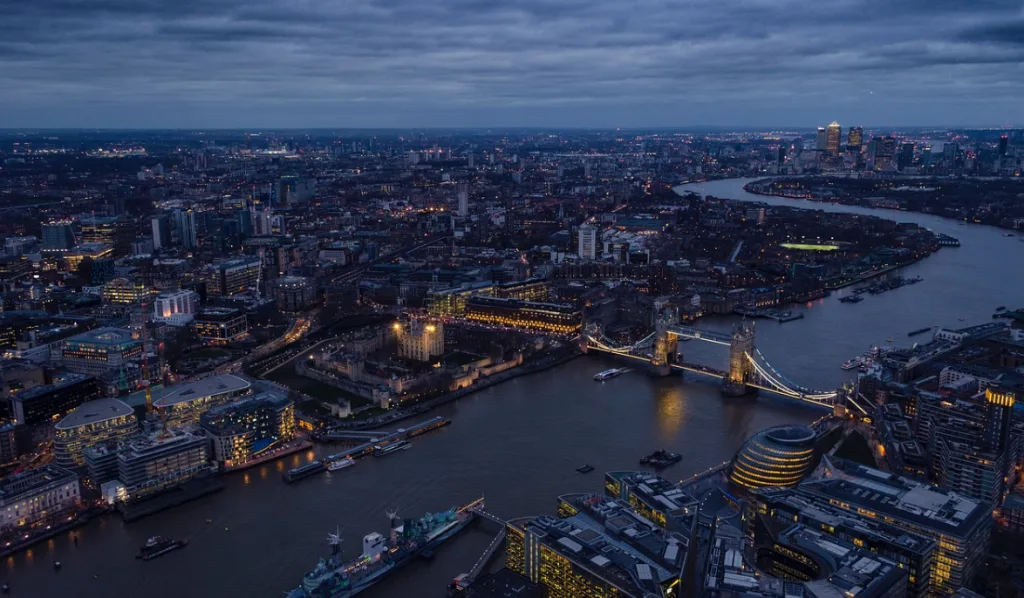
5. What is the current status of the Gherkin?
The building was only open for a couple of years in 2006 when it was put for sale at a price tag of £600 million.
Even though the acquisition of the land and the total construction cost was only about £228.6 million, making the £600 million a hefty price tag, potential buyers were lining up pretty fast.
It was eventually sold for £630 million to “IVG Immobilien AG” and UK investment firm “Evans Randall.”
In 2014, the Gherkin was again put up for sale and sold for £700 million to the “Safra Group,” owned by Brazilian billionaire Joseph Safra.
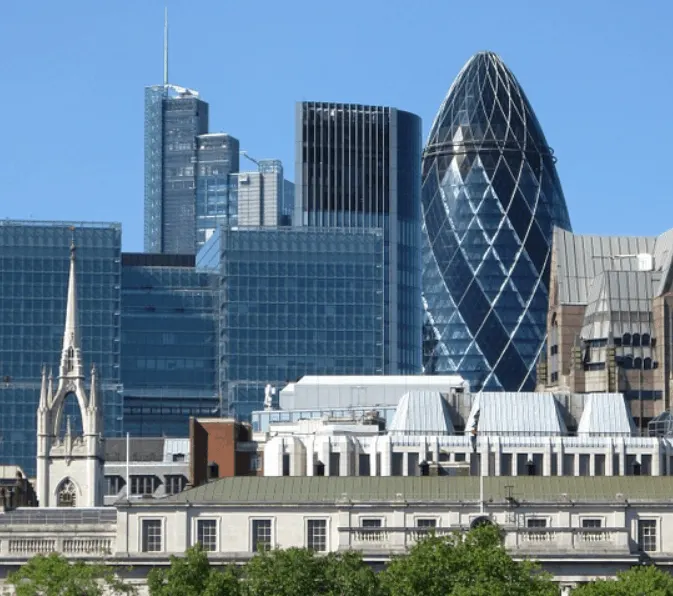
More interesting facts about the Gherkin
6. In 1995, the site located at 30 St Mary Axe was sold to “Trafalgar House,” which was a property investment company. This was because the damage to the Baltic Exchange was too severe and it couldn’t pay for the restorations demanded by the English Heritage.
7. In 1998, Trafalgar House sold the land to Swiss reinsurance company “Swiss Re” for a total amount of £81 million. An interesting fact about this deal was that Swiss Re had also got “planning permission,” allowing them to construct a building on the land.
8. Swiss Recommissioned the building of the Gherkin and was its initial owner. The reason was that they wanted to use the building as their company’s headquarters. Even though this has never been official, the building was also sometimes referred to as the “Swiss Re Building.”
9. The main reason Trafalgar House sold the property was that their huge plans to construct the “London Millennium Tower” were denied. The Millenium Tower was supposed to be the tallest skyscraper in Europe and the 6th tallest in the world at that time at 386 metres (1,265 ft), with 92 floors.

10. So what was the main reason the plan for the London Millenium Tower didn’t go through? One of the objections was that it was considered to be totally out-of-scale for the City of London, considering there weren’t any other buildings of this magnitude.
The main reason though was that the flight paths of both London City Airport and London Heathrow would have been disrupted. The plan submitted by Swiss Ze was for a much lower tower and is the reason the planning permission was granted.
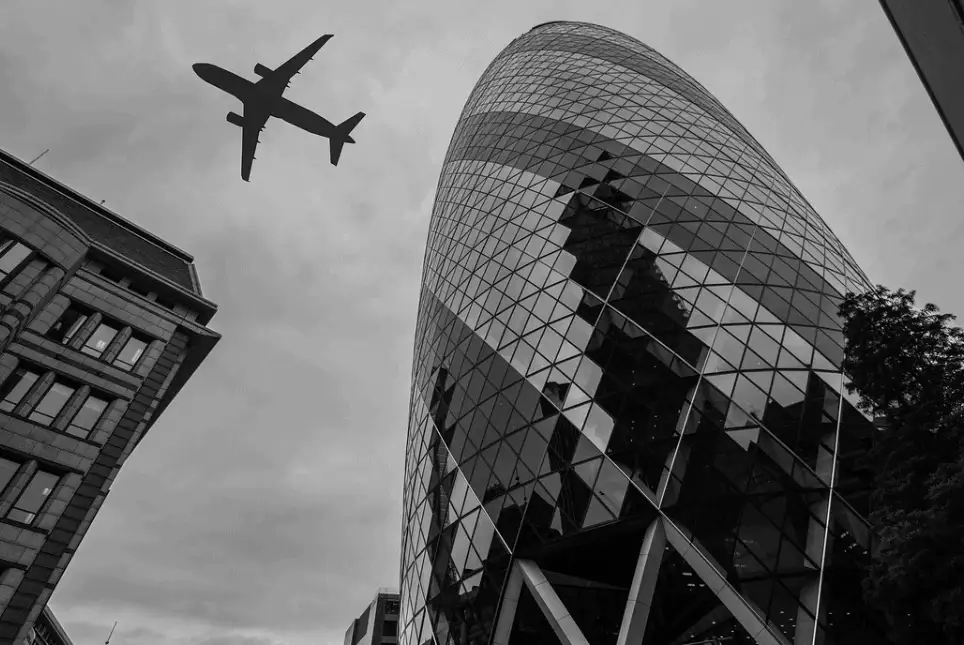
11. One of the most interesting facts about the Gherkin is that the nickname “the Gherkin” has been used ever since the plan for the building has been submitted, way before construction began in 2001. Proof of this is a publication in the Guardian referring to it from 1999.
12. The building was designed by English architect Norman Foster and the London-based engineering company “Arup Group.” Construction started in 2001 and was done by Swedish-based company, Skanska, which has been the fifth-largest construction company in the world according to “Construction Global ” magazine.
13. The Baltic Exchange Bombing took place on April 10, 1992. The perpetrators from the provisional IRA placed a truck containing a detonation cord made from 100 lb of semtex in St Mary Axe, a narrow street leading north from Leadenhall Street.
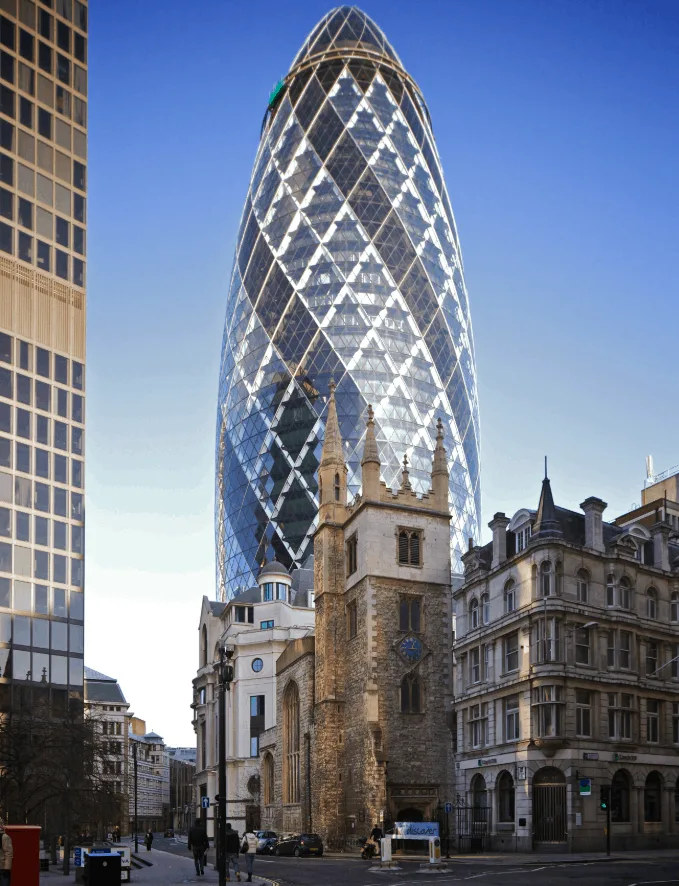
14. The bombing cost the lives of 3 people and dozens of people were wounded. The parts of the building that weren’t destroyed were carefully dismantled and stored with the idea of eventually reconstructing the Baltic Exchange. Unfortunately, that didn’t happen due to financial problems and the remains of the Baltic Exchange were put for sale.
15. Two Estonian businessmen, who most probably enjoyed playing with LEGO as a kid, came across something amazing in 2007. It was the remains of the Baltic Exchange that were up for sale after being in storage for over 10 years. These remains, consisting of 1 million kilos of marble and granite packed in 50 huge crates, got their attention.
They decided to buy them for £800,000 and they got shipped all the way to Tallinn. Since 2007, not much has happened regarding the restoration of the Baltic Exchange as most of the elements remain stored. Only an exposition displaying the pediment was held in 2016 at the Museum of Estonian Architecture.
16. The only curved piece of glass in the Gherkin can be found at the very top of the tower’s topmost panoramic dome. This is actually a reference to the iconic stained glass from the old Baltic Exchange, also referred to as the “Baltic Exchange Memorial Glass.”
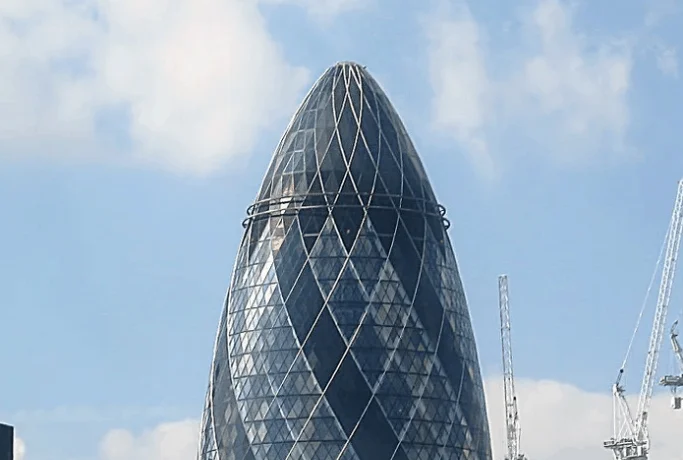
17. The Baltic Exchange Memorial Glass, of which the top section of the Gherkin is a reference, actually survived the Baltic Exchange Bombing. It has been completely restored and reassembled and is now on display at the National Maritime Museum in London.
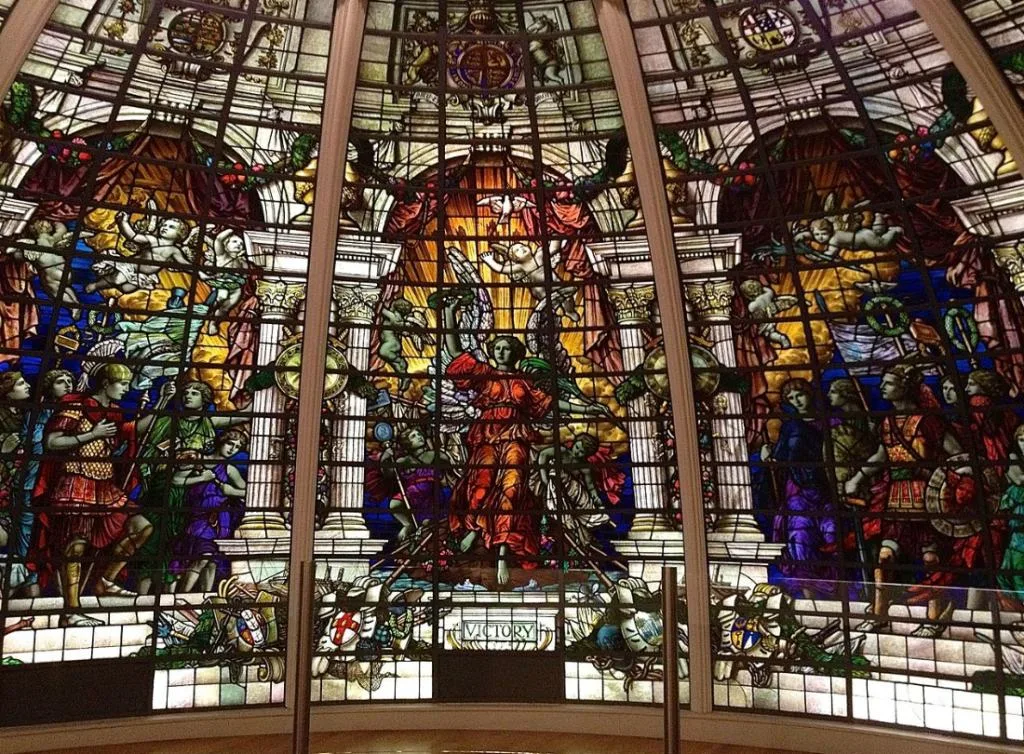
18. At the time of construction, the Gherkin was the second tallest tower in the City of London, the primary business district. Only the NatWest Tower was higher at that time.
19. The building is built in such a way that it only consumes half the energy than any other building of that size. The main reason is the shafts in between the floors that create a similar effect as double-glazing in houses and virtually insulate each floor this way, saving a lot of energy in the process. This effect is referred to as “passive solar heating.”
20. The Gherkin consists of a total of 745 windows. The windows are designed to be opened by a refined computer program that responds to signals from a mini weather station. This station transmits information regarding wind speed, sunlight, and temperature.
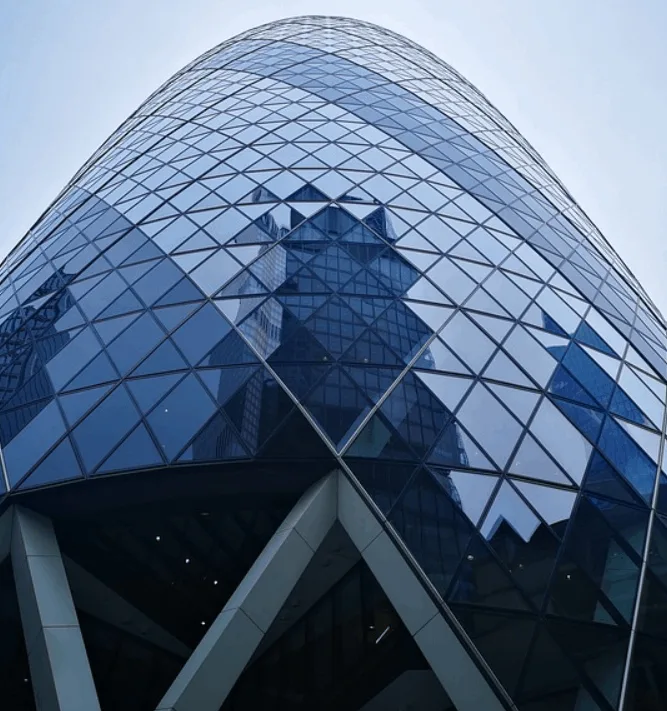
21. In April 2005, something went seriously wrong with one of the glass panels though. One of the windows, about two-thirds up the tower plunged on the plaza in front of the building. Nobody was injured and the construction company that installed the windows, the Swedish-based Skanska, covered the expenses of the incident. As a result, all of the other 744 windows were thoroughly tested as well.
22. A lot of events are held in the restaurant and bar on top of the Gherkin. Every year, Searcys at the Gherkin hosts around 1,400 events offering visitors amazing views of the City of London. These include business conferences, receptions, summer parties and even weddings. Now that’s getting married in style!
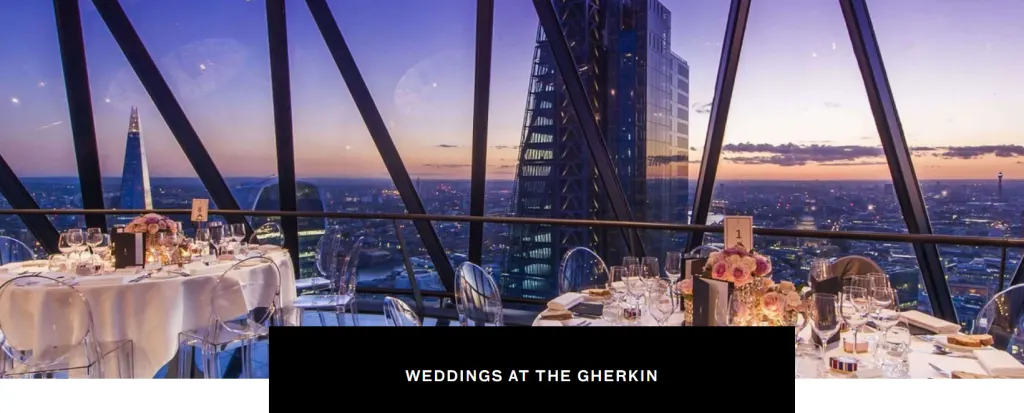
23. If you’re afraid of heights, then becoming a window cleaner isn’t something you should plan to make a career out of. And especially not at the Gherkin! WIndow cleaners are only supported by 2 rails when they make the Gherkin shiny again.
24. On the official site of the building, The Gherkin is described as “the most civilised skyscraper in the world.”
25. Over 35 kilometres (22 mi) of steel were used during its construction. That’s about as far as you can see the Gherkin from on a clear on the M11 from the north. To the west, it can be seen from the statue of George III in Windsor Great Park.
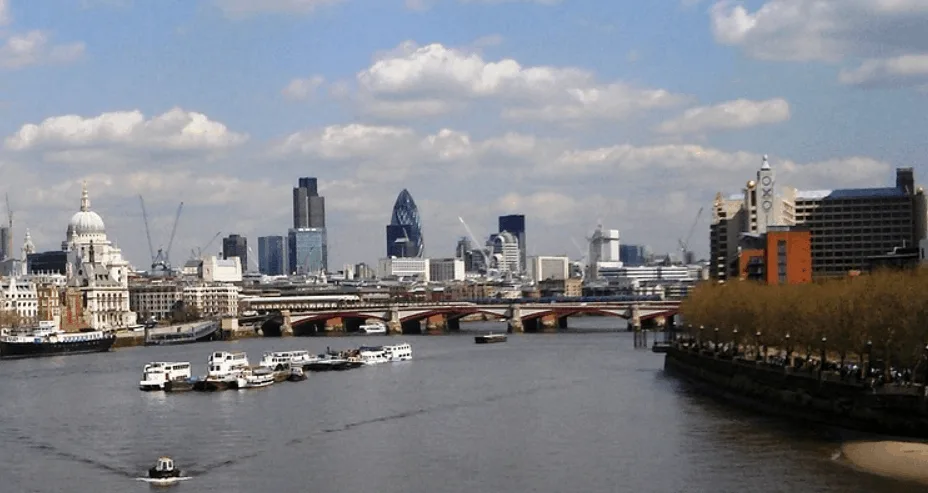
26. The amount of glass used on the outside of the Gherkin would be enough to cover 3 entire football/soccer fields.
27. Are you in for some exercise? Then you can always take one of the 3 staircases inside the Gherkin. They only have 1037 steps so that shouldn’t take too long.
28. The building has 33 floors of office space. The other floors are reserved for the bar, restaurant, dining areas and security floors. Remarkably, the 16th floor is the biggest covering an area of 1,816 square meters.
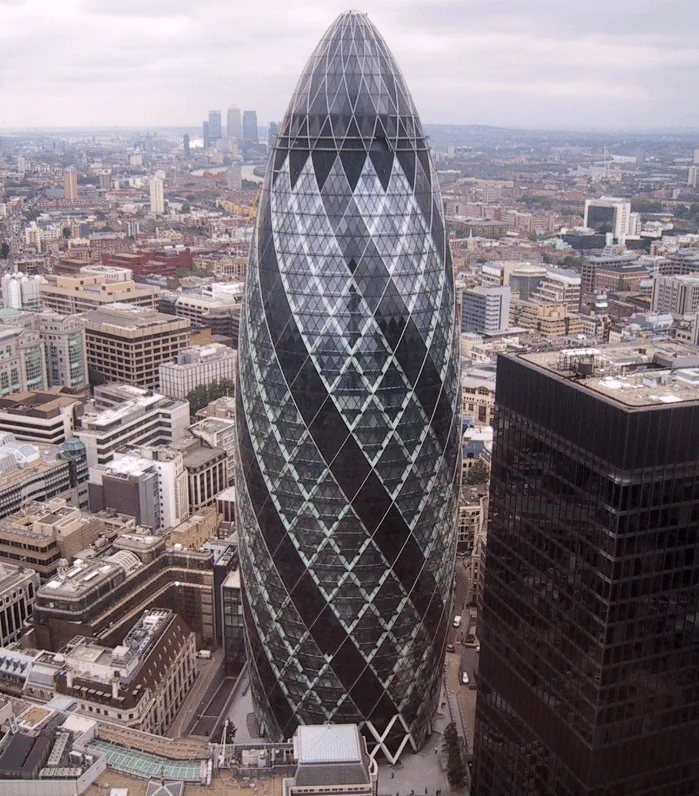

Leave a comment
You must be logged in to post a comment.